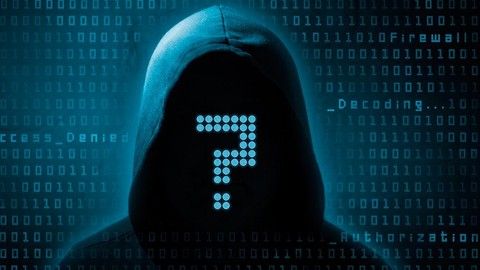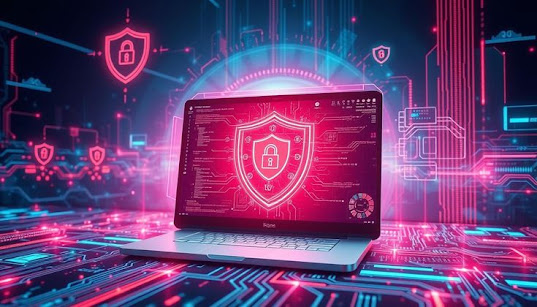The Cybersecurity Risks of Digital Twins in Smart Cities 2025
The Cybersecurity Risks of Digital Twins in Smart Cities
Smart cities are evolving rapidly in 2025, bringing us closer to a fully connected, data-driven urban environment. At the heart of this transformation lies the concept of Digital Twins — virtual replicas of physical city systems such as traffic, utilities, buildings, and public safety infrastructure.
While digital twins enhance efficiency, decision-making, and city planning, they also introduce new layers of cybersecurity vulnerabilities that are increasingly being targeted by sophisticated threat actors.
What Are Digital Twins in Smart Cities?
A digital twin is a dynamic, real-time digital model that mirrors a physical object, system, or environment. In the context of smart cities, digital twins replicate:
- Traffic flow and transportation systems
- Water supply and wastewater treatment networks
- Power grids and renewable energy sources
- Smart buildings and surveillance systems
- Emergency response networks
These twins are fed by live data streams from IoT devices, cameras, GPS, and sensors, making them valuable for simulation, forecasting, and emergency planning.
Why Are Digital Twins a Cyber Target?
The sophistication of digital twins comes with an expanded attack surface. The integration of countless devices, systems, and real-time data feeds creates opportunities for:
- Data breaches that expose private citizen and city data
- Service disruption attacks that affect essential services
- Surveillance hijacking where threat actors manipulate video feeds or tracking systems
- Supply chain compromises through connected third-party technologies
A cyber attack on a digital twin system could paralyze a city, leading to traffic chaos, power outages, and breaches in public safety operations.
Real-World Threats in 2025
While digital twin technology offers smart solutions, we are already seeing emerging threats in real implementations:
- Deepfake environmental data: Fake weather data manipulated by AI to cause panic or mislead emergency responses.
- Hacked traffic control twins: Attackers spoof traffic sensors to alter signal patterns and cause gridlock.
- Water supply manipulation: Accessing a city's water infrastructure twin to poison supply routes or disrupt delivery.
Such scenarios are no longer theoretical — they are part of advanced persistent threat (APT) campaigns by cybercriminals, hacktivists, and even state-sponsored groups.
The Key Cybersecurity Challenges
There are multiple cybersecurity hurdles in securing digital twins:
1. Complex Integration Across Systems
Digital twins connect heterogeneous systems like SCADA, IoT, cloud services, and AI platforms. Each has its own vulnerabilities. A flaw in one system can compromise the whole.
2. Real-Time Data Integrity
Real-time decision-making relies on accurate data. Tampered or spoofed data can lead to flawed simulations and poor urban decisions.
3. Lack of Standardized Security Protocols
Currently, there’s no unified global framework for digital twin security. Many cities are deploying digital twins without hardened cybersecurity practices.
4. Insider Threats and Admin Access
City employees or contractors with elevated access pose a significant threat. A single compromised admin account can open the gates to full citywide disruption.
5. AI-Driven Attacks
In 2025, attackers are using AI to probe systems, generate targeted exploits, and automate intrusion techniques — making digital twins even more vulnerable.
Case Study: A Near Miss in Amsterdam
In early 2025, Amsterdam’s smart traffic management digital twin detected strange input patterns suggesting multiple accidents. Upon investigation, it was discovered that hackers had injected false data into roadside sensors via a third-party IoT firmware flaw.
Luckily, response systems detected the anomaly in time. But this incident highlighted the danger of falsified telemetry data affecting real-world outcomes.
Strategies to Secure Digital Twins
To safeguard smart cities and their digital counterparts, a multi-layered security strategy is essential:
A. Secure Data at the Source
Protecting edge devices like sensors, cameras, and IoT nodes is the first step. Encryption, device authentication, and regular firmware updates are essential.
B. Real-Time Anomaly Detection
AI-powered threat detection systems should continuously monitor digital twin environments for unexpected behaviors and patterns.
C. Zero Trust Architecture (ZTA)
Never trust, always verify — this principle must be applied to every layer of the digital twin system, including internal traffic.
D. Cybersecurity Simulations Within Twins
Use the digital twin itself as a simulation ground to test various cyberattack scenarios and citywide incident responses.
E. Secure APIs and Cloud Integrations
All API communication should be authenticated, encrypted, and monitored. Integration with cloud services must follow stringent compliance rules.
F. Workforce Training and Awareness
Human error is still a major vulnerability. Train city workers and IT teams on the specific threats related to digital twin systems.
Future Outlook: Building Cyber-Resilient Cities
As smart cities expand and rely more on predictive, AI-driven planning, digital twins will become foundational to urban life. But without cybersecurity at their core, these systems can turn from helpful allies into dangerous liabilities.
Cyber resilience must evolve in parallel with digital twin adoption. That means proactive investments in technology, people, and policies designed to protect the virtual and the physical alike.
Key Takeaway: Digital twins are the nervous system of smart cities, but if not secured, they can become a weapon in the hands of cybercriminals.
Conclusion
Digital twins are no longer future tech — they’re active components of today’s urban ecosystems. But as with any innovation, new doors bring new risks. Understanding and mitigating the cybersecurity challenges of digital twins must be a top priority for city planners, IT leaders, and policymakers.
By strengthening security frameworks and staying one step ahead of cyber threats, we can ensure that digital twins remain a force for good in shaping smarter, safer, and more responsive cities.
Author: Tech Wisdom Wave
Published: May 2025







Comments
Post a Comment